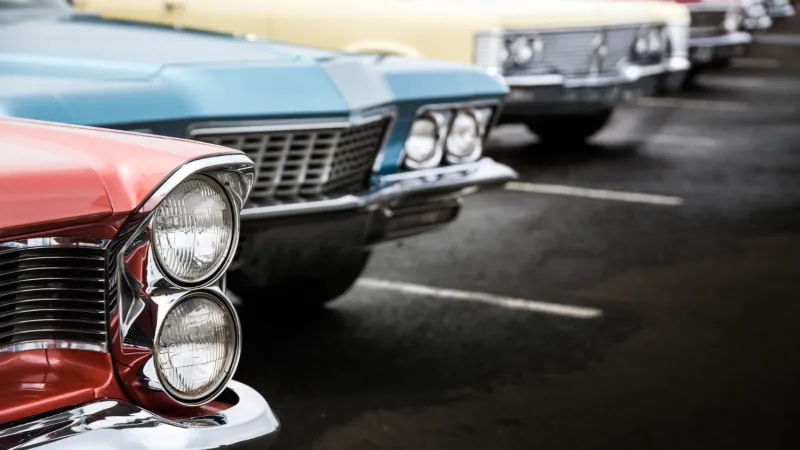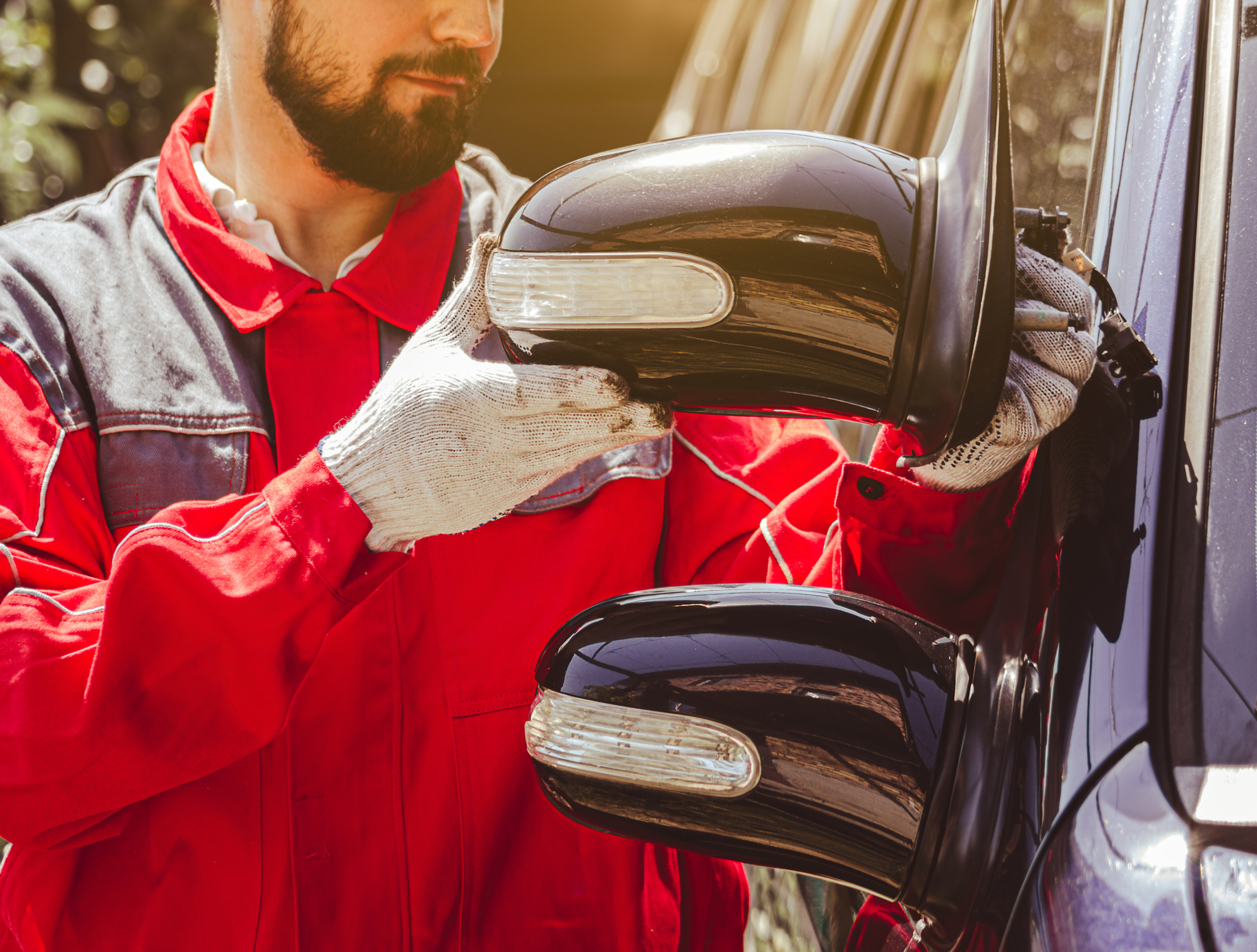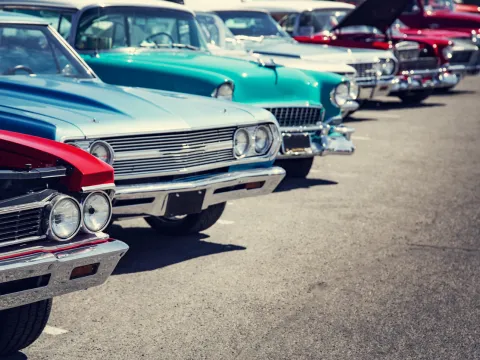
Behind the Policy: Decoding the Insurance Lingo of Classic Cars
Summary
Reading Time
5 min
The arrival of spring is exciting for everyone in the Prairie provinces but has a totally different meaning and level of excitement for classic car owners out there. It’s that time of the year when you open up the garage, finally take that tarp off your classic car, tie up any loose ends, touch up those last-minute spots, and get your shiny toy on wheels ready for the road. What could be better? Well, here’s the thing—your classic car and primary car that you drive year-round aren’t the same in many ways, and not just because one is a bit cooler than the other. They each carry different risks, which come with distinct coverages and limits. What does this mean for you? You might want to have protection on your classic car that you don’t need or want for your regular car. That’s where Sandbox’s Classic Car Insurance comes in. There are insurance policies and products out there that are purposely intended for classic cars, so let’s go through what those are and why they may be beneficial to you and your ride versus standard car insurance.
What’s considered a “classic” or “antique” car?
First things first, how do you know which vehicle is considered an antique or classic car? Trust us to break it down the delightfully simple way. To know if your vehicle qualifies as a “classic car,” it must be 15 years or older, and for “antique cars,” it’s got to be 30 years or older. If your cool ride meets this criterion, Sandbox can insure it in Saskatchewan or Manitoba. There’s a bit more to this though, including the number of kilometres driven in a year and intended use of the car, which will impact your policy and whether your ride qualifies for Sandbox Classic Car insurance. We recommend reaching out to a broker near you with your car’s details or for a free quote.
Now that you know what makes up a classic or antique car and you might want to insure your ride under a Classic Car insurance policy, there may be some differentiations in these documents versus your standard car insurance policy that you should know. At Sandbox, we believe in less words, steps, and barriers, so we want you to understand your policy just as we would! Let’s go through what some of those words might be and how they might be different for classic cars:
- Comprehensive
Damage inflicted on your vehicle from external sources is covered under comprehensive coverage. Some examples are vandalism, falling or flying objects, hail, and more. Easy enough! - Collision or Upset
Collision or upset is a type of coverage, and these two words often go together on a policy. Essentially, if your vehicle is involved in a collision with another object, animal, or rollover, this is the part of the insurance policy that covers the damage. Collision/upset also covers hit-and-runs on your car, so those unexpected marks are covered. - Road Hazard Glass
This is coverage for your vehicle’s windshield in case of stone chips or cracks. In a classic car insurance policy, road hazard glass is automatically included under your comprehensive coverage whereas in standard car insurance, road hazard glass is optional, meaning you can add it to your policy but is not automatically included. - Premium
A premium is the amount you pay as a policyholder for your insurance policy. Premiums are based on many factors, but for antique and classic cars, the appraised value of the vehicle really matters (so does your location, previous claim history—all that good stuff). - Modification
If your vehicle has any major or minor modifications on it, this may impact your classic car insurance policy compared to a standard car one. This is due to authenticity purposes and posing a high-risk since it may be too complex to find the appraised value when too many modifications are installed. With Sandbox, a classic or antique car can be insured if it has one major modification or two minor modifications.

We didn’t go too insurance-y on you in that last bit, did we? If you want more car insurance industry terms, visit Car Insurance 101: 10 Industry Terms You Need to Know. Let’s get into one last nitty-gritty detail now. Your classic car might be your ride or die, but in some cases, it isn’t always the “ride” part. Classic Car insurance with Sandbox provides coverage for exhibitions, club activities, parades, hobby activities, and all those other public functions you may attend to show off your hard work. Standard car insurance will cover your vehicle for day-to-day transportation purposes.
All-in-all, whether classic car insurance is the most suitable option for you and your vehicle is very dependent on its use and description. You want to choose the policy that best suits your vehicle, one that protects its parts and, of course, your budget. As a simple rule of thumb, if you think you might need it one day, or even find it valuable to have for peace of mind, then you should always opt for that route when it comes to car insurance. For more information about Sandbox’s Classic Car insurance, visit our website. On this page, you can find frequently asked questions by fellow policyholders, variations for Manitoba and Saskatchewan, and helpful resources to kickstart your insurance journey with full-throttle confidence.
Please note that the information in this article may not accurately reflect your insurance policy from Sandbox Mutual Insurance or another insurance company. Please refer to your policy or talk to your broker about your specific coverages.

FAQ'S
What makes classic car insurance different from my regular auto insurance?
Classic car insurance is designed specifically for vehicles 15–30+ years old that aren’t used for daily commuting. Because these vehicles carry unique value, risks, and usage patterns, classic car policies offer specialized protection—like automatic road hazard glass, limits based on appraised value, and coverage for parades, shows, and club events.
Can my modified classic car still be insured under a Classic Car policy?
Yes—within limits! Sandbox can insure a classic or antique car that has one major modification or two minor modifications. Too many custom changes can make the true value harder to determine (and harder to repair), which is why limits exist. A broker can help assess whether your ride qualifies.
Do I need an appraisal for my classic or antique car?
Most classic car policies require an appraisal to help determine accurate coverage and premium costs. Because classic cars appreciate differently than modern vehicles, knowing the vehicle’s true value is essential for proper protection. A broker can help you understand what type of appraisal you'll need and how often it should be updated.



